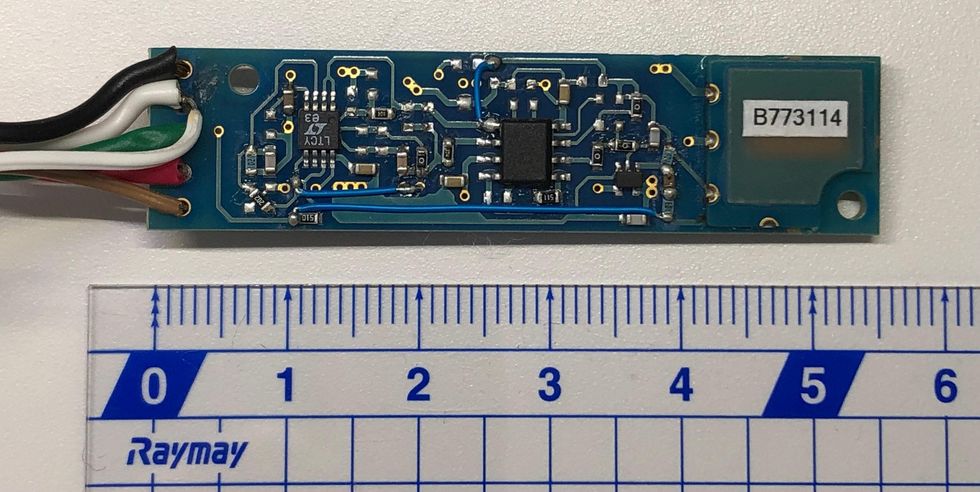Space weather kills satellites—as was the case last February when a solar storm killed a SpaceX Starlink launch, casting US $50 million worth of hardware back into the atmosphere to burn up like kindling into a fire. And of course space weather threatening terrestrial power grids—as happened in Quebec in 1989, when an entire grid went dark because of a geomagnetic storm—always looms over electric utilities around the world.
Yet monitoring space weather can be a complex and costly business. The Space Weather Prediction Center in the United States, for instance, employs a variety of ground- and space-based technologies and gets help from the U.S. Air Force and its network of optical observatories to provide space-weather forecasts. Such sophisticated monitoring doesn’t come cheap. Satellites made for this purpose cost millions of dollars and take years to build and test. And ground-based high-sensitivity fluxgate magnetometers, used to measure changes in Earth’s magnetic field brought about by changes in the magnetosphere, can cost as much as $30,000, putting them beyond the means of many researchers.
So, scientists at the Institute of Space-Earth Environmental Research (ISEE) at Nagoya University, in central Honshu, Japan, are developing a low-cost system to measure and observe space weather entirely from the ground using magneto-impedance (MI) sensors. Discovered in 1993 by scientists at Nagoya University, magneto-impedance, or giant magneto-impedance (GMI), as it is now called, is the change in electrical impedance in some materials when subjected to an external magnetic field.
Masahito Nosé, an associate professor at ISEE, had the idea that an inexpensive MI sensor costing the equivalent of just a few thousand dollars could be adapted to observe and monitor changes in the geomagnetic field brought about by changes in space weather—just like the far more costly fluxgate magnetometers.
“Currents generated by ionized particles flowing in the magnetosphere tens of thousands of kilometers above Earth produce magnetic field variations,” Nosé explains. “When the magnitudes of these currents change, the effect can be observed in the changes in the magnetic field on Earth.” This means, he adds, we can determine the status of space weather from the ground.
“Pushing down the cost of such instrumentation would enable denser networks of observation stations and a finer-scale structure to be resolved,” says Matthew Owens, professor of space physics at the University of Reading, in the United Kingdom. “So MI sensors have great potential for space-weather observations.”
In 2017, Nosé contacted Aichi Steel Corp., a local manufacturer of MI sensors. Although these sensors are made for industrial uses such as detecting the presence of metal during the processing of foods, and also in smart phones as compasses, Nosé convinced company engineers that there was a business opportunity to be had in modifying the sensor’s functionality if his idea proved successful.

“I tested the results in the field and provided feedback,” said Nosé. Eventually, the company was able to improve the sensitivity of an MI sensor using amorphous wire, a pickup coil, control components, and a magnetic-flux locked loop circuit to extend the measurement range. All these components were mounted on a 55-by-13.5-by- 4.6-millimeter PCB. “The sensor can detect very small geomagnetic field variations of about 0.1 nanotesla, which is necessary for space-weather study,” he says. “Existing sensors for electric-compass use operate at around 100 nT.”
In the initial test installation, three MI sensors were mounted on a jig stored in a plastic box and buried in the ground at a depth of at least 20 centimeters. The point of staging the experiment this way was to minimize movement and changes in temperature, given that both variables can cause errors. A cable connected the sensors to an observation hut located more than 25 meters away; recorded measurements were stored on a hard disk.
The results detected by the MI sensors were compared with those of a fluxgate magnetometer in the same location. “We found very good agreement between the two,” says Nosé. “The MI sensors detected various geomagnetic phenomena, including geomagnetic storms, solar quiet variations, and sudden storm commencements.” The findings were published in the Journal of Geophysical Research: Space Physics in October 2022.
“The results look promising,” says Owens. “But a longer-term comparison between the two instruments is needed for confirmation.”
Presently, Nosé and colleagues are monitoring space weather in two locations north of Tokyo using MI sensors. Measurements are recorded around the clock and stored on a memory card for real-time monitoring. “Finding locations for the MI sensors is difficult,” says Nosé, “because they have to be in rural areas away from all electrical interference, including electric trains.” The results show that one area of improvement needed is better control of temperature drift, which can adversely affect long-term observations.
The next step is to increase the number of monitoring locations. Nosé is working with government agencies and other universities to have six more sites set up in the Kanto-Tohoku region of Japan.
“Eventually,” he says, “with a dense network of observations, we can create a 2D map of plasma density in the magnetosphere, a fundamental determinant controlling phenomena occurring in space.”
Owens notes that it difficult to say at this stage how successful this particular development could be. “But 2D maps could be potentially very useful for assessing and improving models of the magnetosphere,” he says, “which will ultimately improve space-weather forecasting, as well as monitoring.”
Nosé hopes to have the network in operation within five years. By that time, he expects an improved commercial magneto-impedance sensor magnetometer will be available as a substitute for the expensive fluxgate magnetometers.



